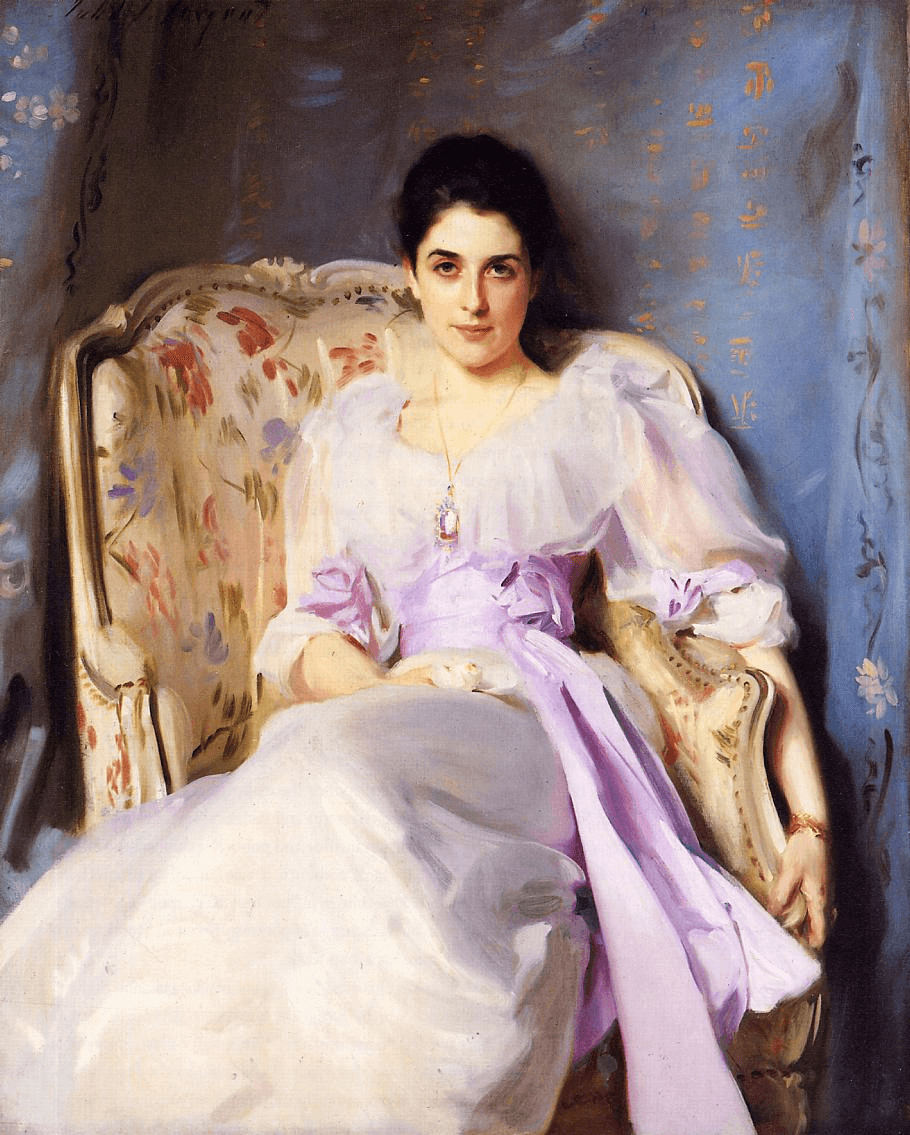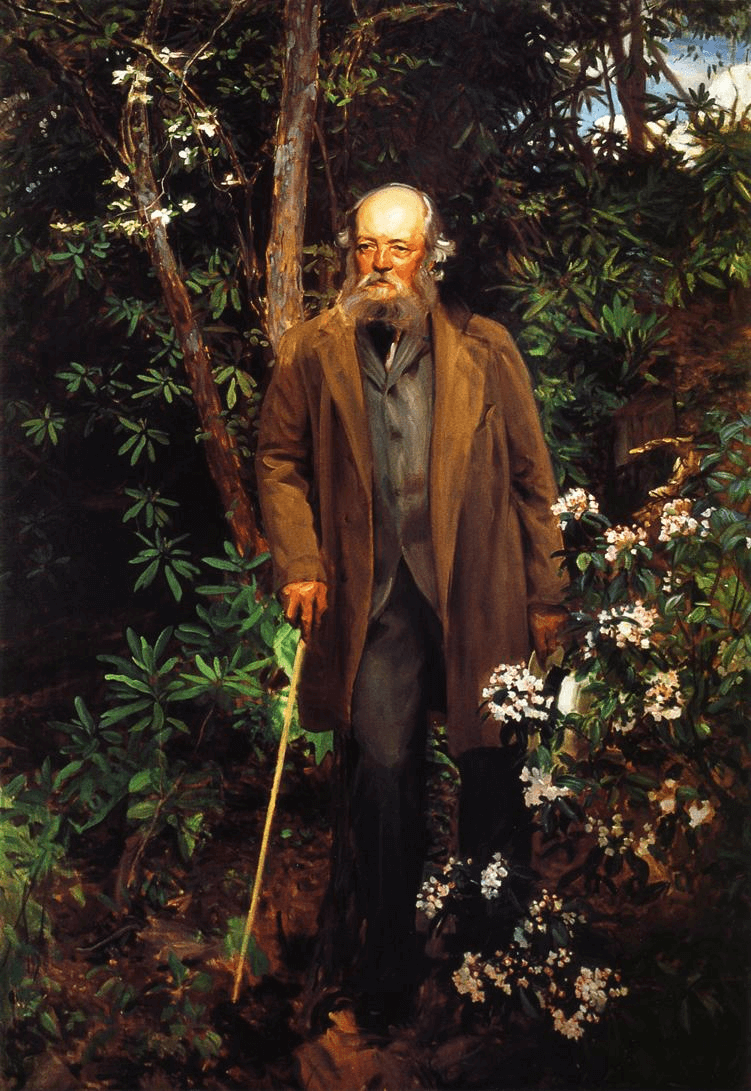I love the American artist John Singer Sargent (1856-1925), and I have wanted to write an Art That Inspires Me post about him for a while. However, there are just so many things that inspire me about Sargent, and I struggled to pick a few to focus on. But then someone posted this painting on Instagram, and I remembered that this is my all-time favorite Sargent painting. Unfortunately, I have not yet seen it in person. (Added later: not anymore!)

The painting depicts Lady Agnew of Locknaw, born Gertrude Vernon (1865-1932). I don’t know anything about her, except for the fact that she was the wife of a Scottish nobleman, and they had no children. I have resisted doing any research about her, because I don’t want more information to change my experience with this painting. I always wonder, however, if her husband was related to the important London art dealer Agnew’s.
Why do I like this painting? Well, it might have a little to do with the fact that gorgeous Lady Agnew looks like a grown-up version of my beloved childhood Samantha doll from the American Girls. But besides, that? I think this portrait demonstrates two of the things that Sargent was best at. First of all, he had a really exceptional ability to give the impression of people’s inner lives without doing much to overtly suggest it. Lady Agnew is very expressive in a wonderfully subtle way. Her facial expression seems mild, but you can’t possibly think she lacks substance or thought. In fact, I get the strong impression that she’s thinking some pretty interesting thoughts, but it’s difficult to decide what they are. I think that mystery contributes a lot to the painting’s success. Her body language is relaxed, and she seems quiet and even a bit casual, but she’s definitely not passive. The fact that she’s making direct eye contact with her viewers certainly tells us that. Sargent painted a lot of female portraits, many of wealthy society women. Most – though definitely not all – of them look properly dignified for the era, but he gave a strong sense of each being an individual rather than just a pretty face in a pretty dress. This wasn’t necessarily what every other portrait painter was doing at this time. I have a feeling Sargent was a keen observer of human psychology.
Secondly, Sargent was amazing at painting lots of luxurious textures. You can see that here on Lady Agnew’s purple gown and sash. I find that I usually prefer Sargent’s female portraits to his male portraits, and I think that his talent for fabrics is part of the reason why. They are right in the sweet spot between naturalistic and abstracted. His subjects’ skirts don’t devolve into gorgeous abstracted brushstrokes like Giovanni Boldini‘s, but instead they hover right on the edge between recognizable fabrics and exercises in painterly brushwork. This gives a lovely softness to all the textures of this painting – her dress, the upholstered chair, the Asian textile behind her, and even her metal jewelry. Only her face is fully detailed, and that draws the viewer’s eyes to hers. Sargent seemed to always know just how much detail was necessary to indicate precisely the visual features he wanted to convey, but he didn’t use one tiny bit more. He wasn’t quite an Impressionist, but he definitely shared their spirit in some important ways. In this sense, he was able to walk a fine line between being innovative and being acceptable as a portraitist to polite society. (Except, of course, with Madame X, where he was shocked to find himself falling pretty far off that line.)
Other Sargent works that I love

- Edouard and Marie-Louise Pailleron – I’ve already written a post about this painting, which I’ve unfortunately not yet seen in person. But there’s no better example of how Sargent could convey intensity in someone’s facial expression. That’s one formidable young lady!
- Frederick Law Olmstead – I usually prefer Sargent’s female portraits to his male portraits, but I make an exception for this one. Frederick Law Olmstead (1822-1903) was a celebrated American landscape designer who was responsible for New York’s Central Park. He also designed acres upon acres of grounds at Biltmore Estate, which is where I saw this portrait. Olmstead was elderly and frail by the time he finished work at Biltmore, the occasion for which Biltmore owner George Vanderbilt commissioned this work. Sargent acknowledged the reality of Olmstead’s condition while showing him with a sympathetic dignity that I find truly compelling. I also love Sargent’s portrayal of the leafy greens of the landscape background.
- Elizabeth Allen Marquand – I have seen this portrait several times at the Princeton University Art Museum, and it always makes me smile. Like Lady Agnew, Mrs. Marquand has a mild expression that is nonetheless full of personality. I always feel that she’s greeting me and perhaps inviting me for tea when I spot her from across the room.
- Watercolors – In addition to his beautiful portraits and other oil paintings, Sargent also painted scores and scores of watercolors. He made many of them on his extensive travels all over the world. His watercolors, which are generally more painterly than his oils, are great examples of his ability to give the sense of so much using relatively little paint and brushwork. I wrote about Sargent’s watercolors a few years back, right after I had read a book about them. Since then, I’ve seen them in several museums.



